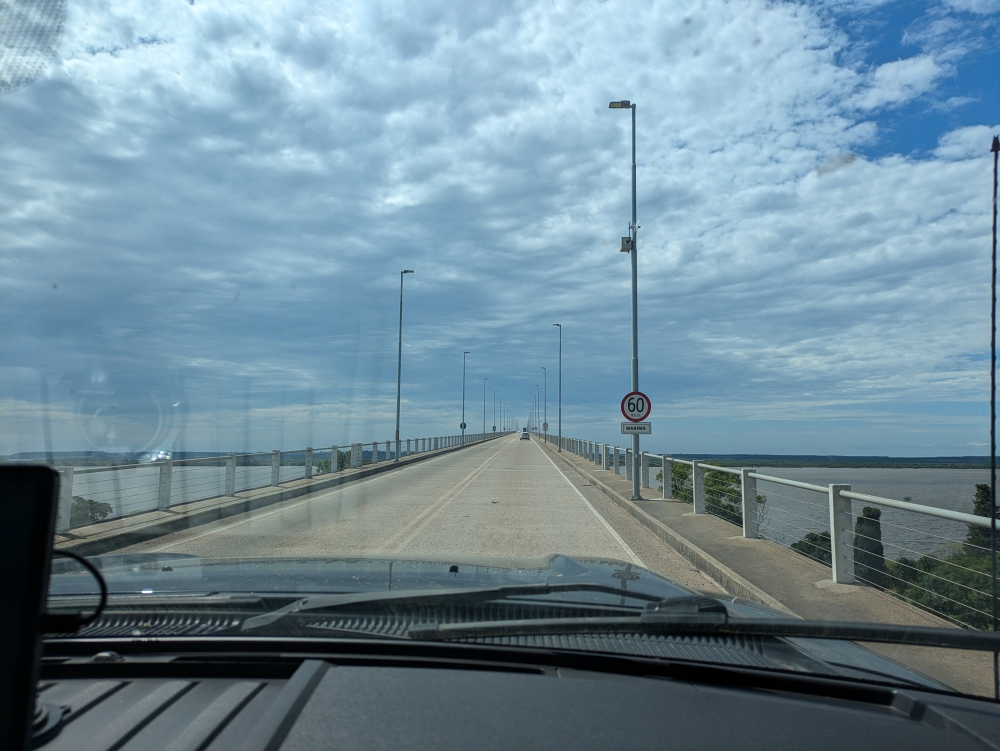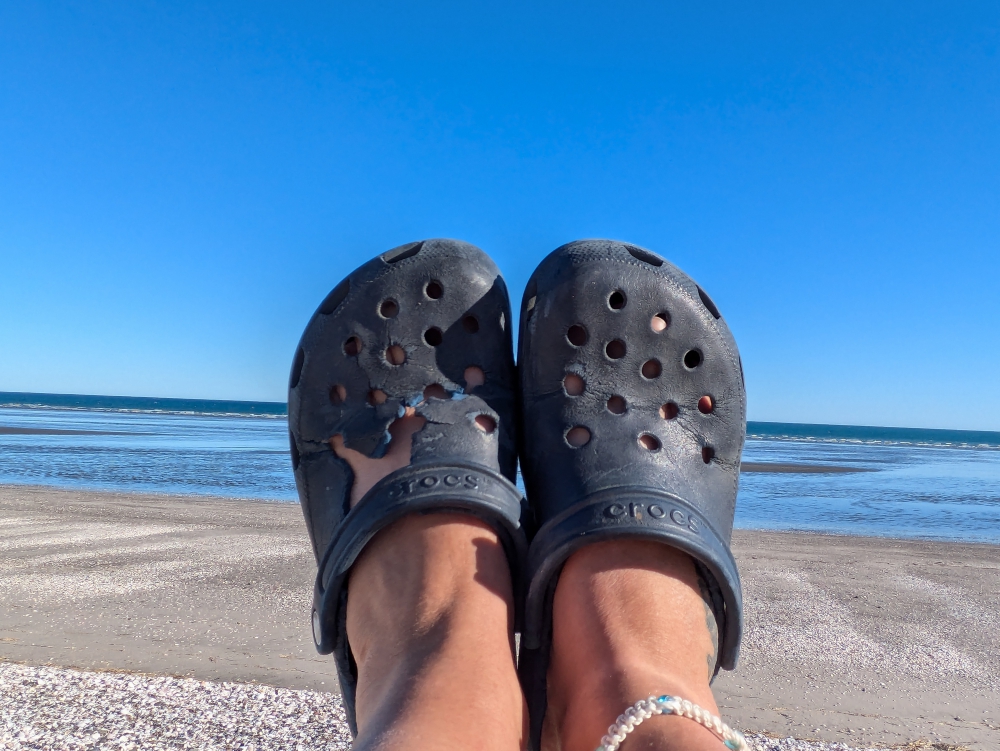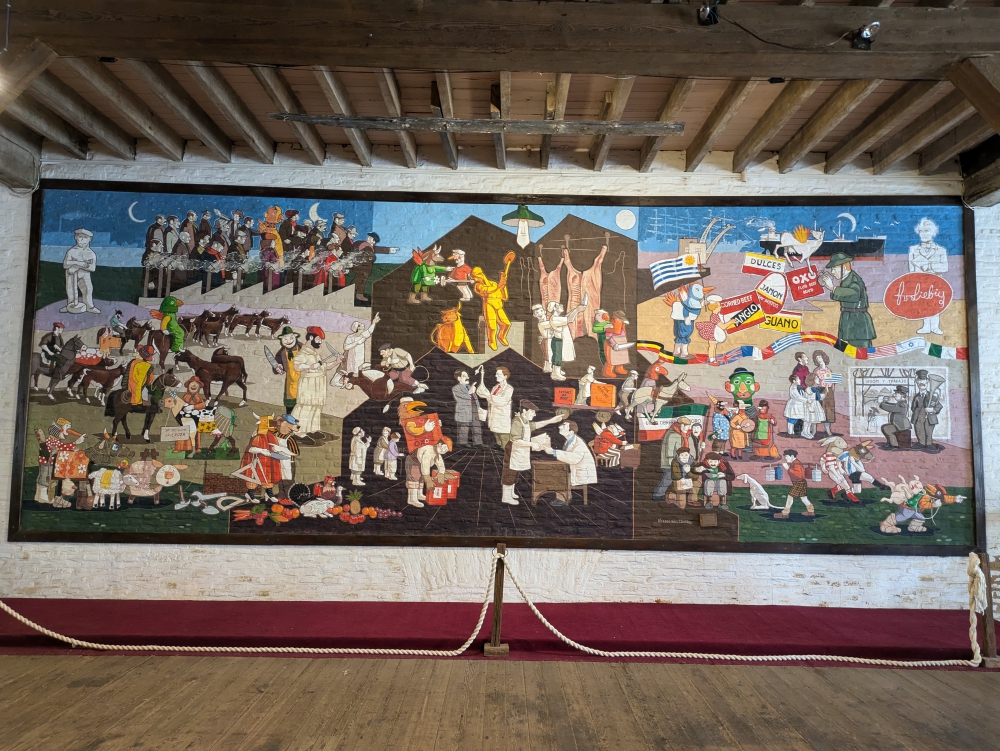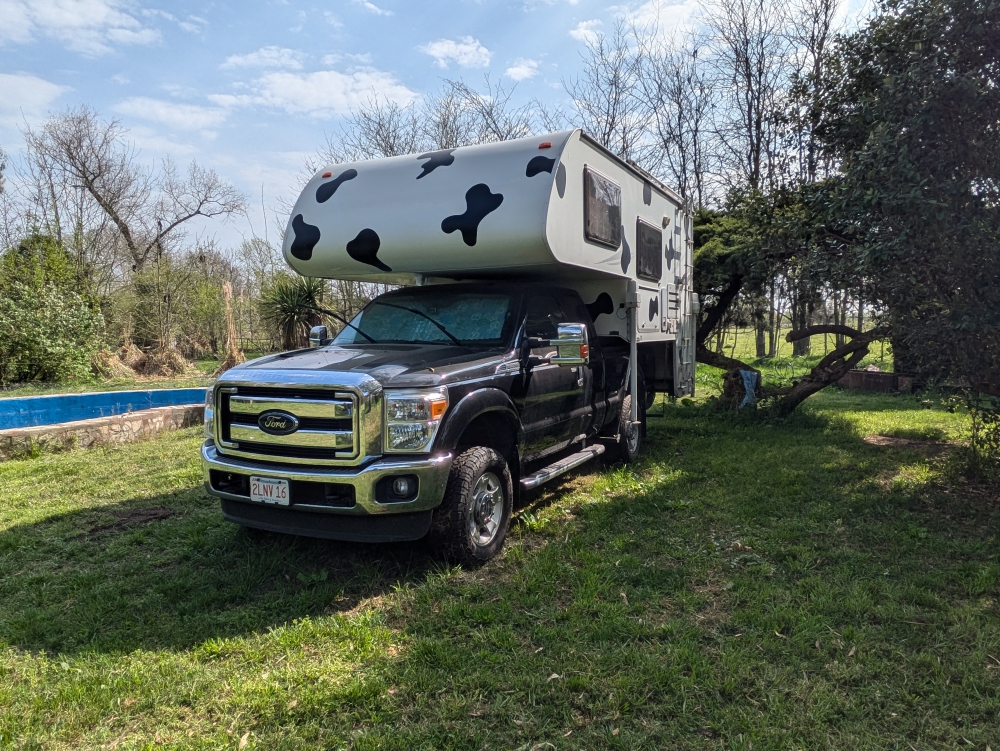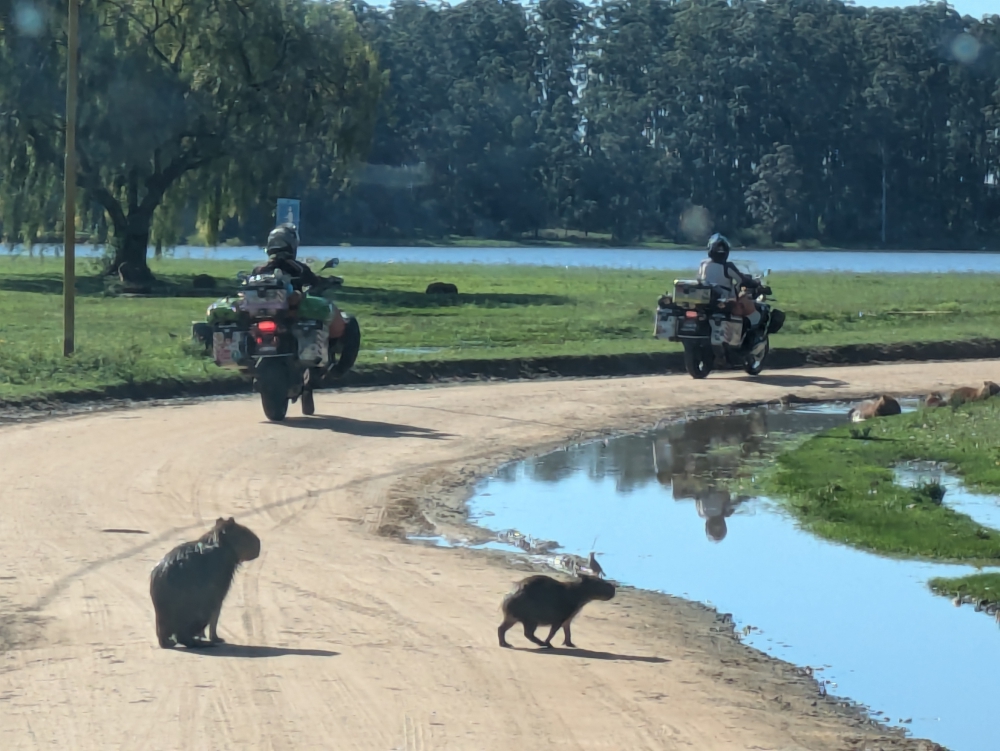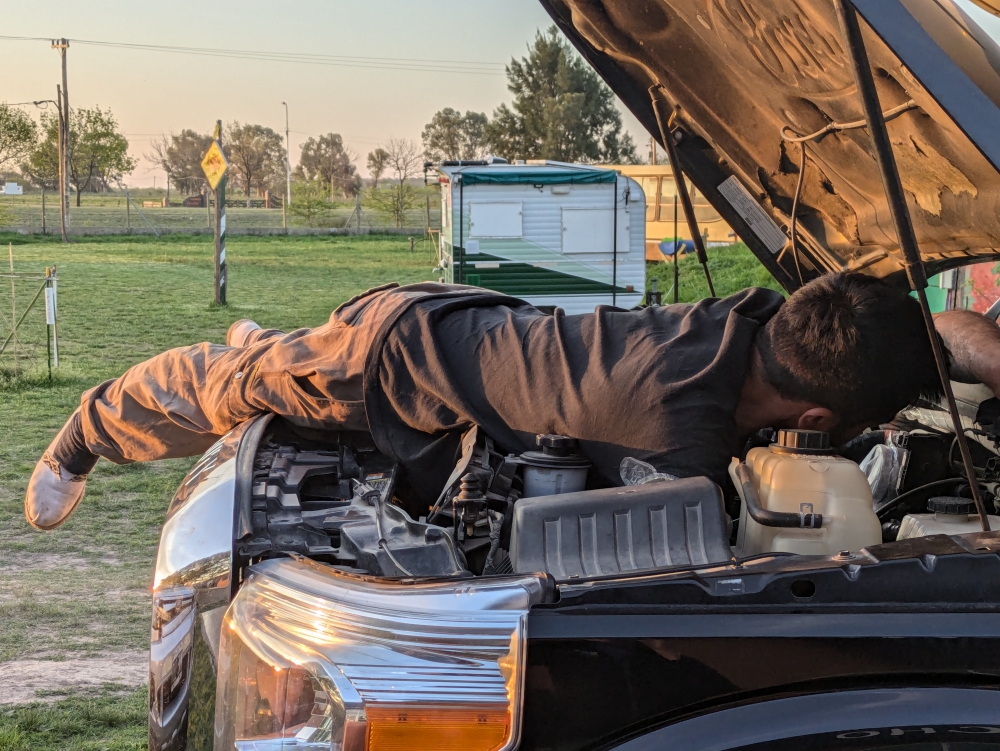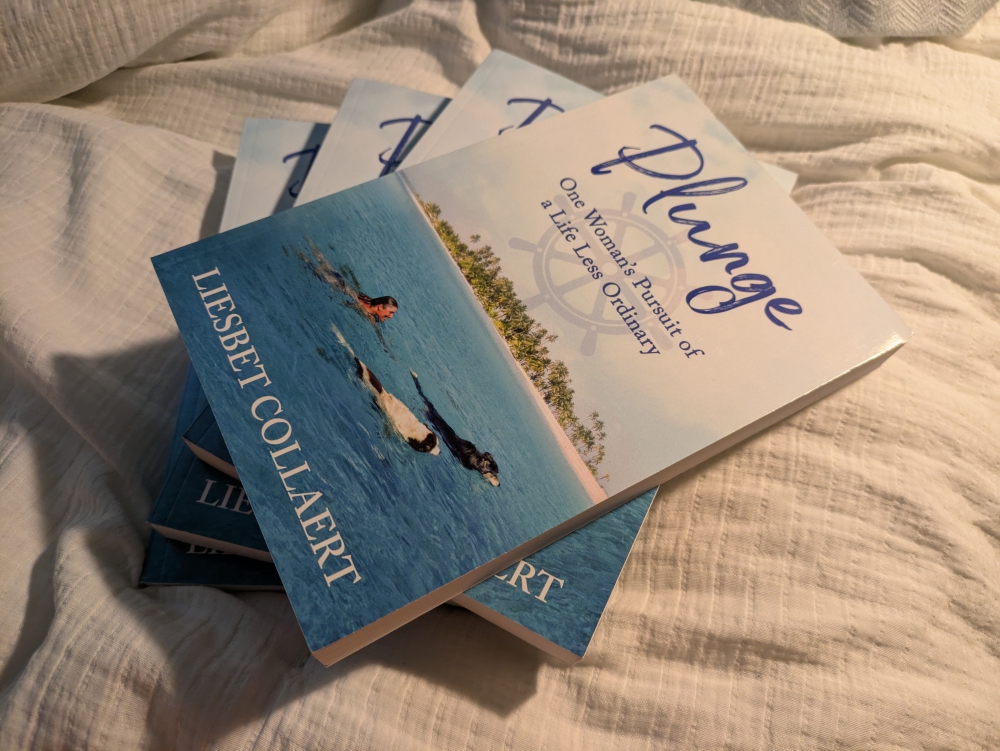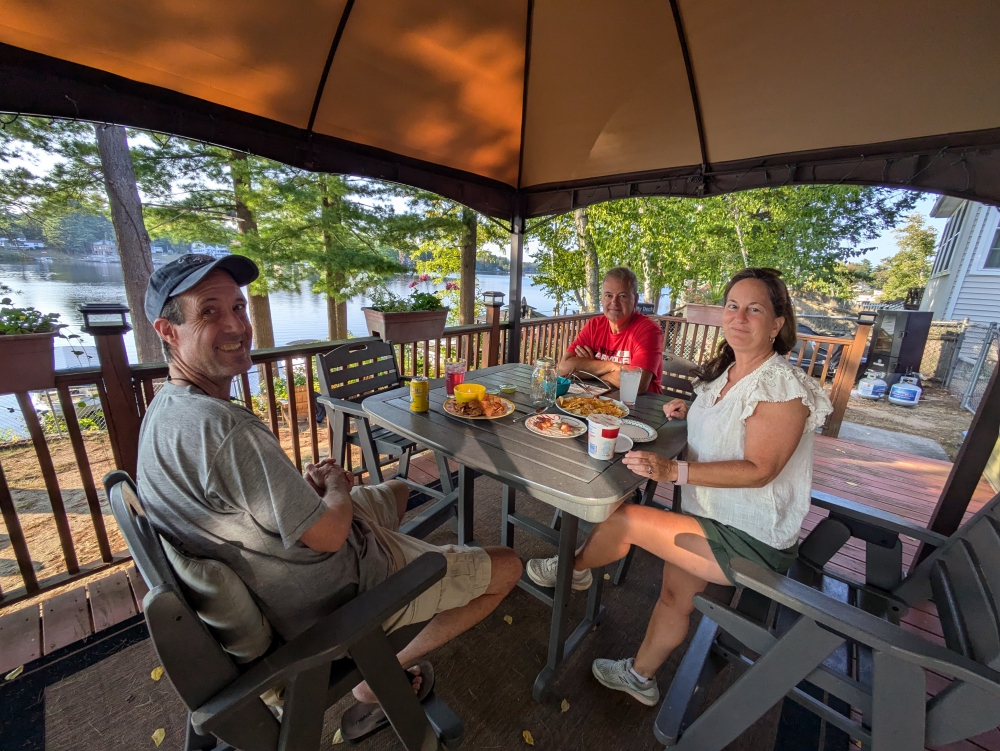
Roaming About
A Life Less Ordinary
Category: Truck camper living (page 4 of 14)
(It might be easier to read the table when turning your device in the horizontal position.)
Find all our expense reports here. To learn what other full-time nomads spend, check out the blogs of our nomad friends Duwan and Greg at Make Like An Ape Man.
Next up: Wildlife encounters in Patagonia
If you are enjoying these posts, please consider donating to Roaming About in support of our website and our lifestyle. A big thank you to all our readers who have helped out in the past!
(It might be easier to read the table when turning your device in the horizontal position.)
Find all our expense reports here. To learn what other full-time nomads spend each month, check out the blogs of our vanlife friends Duwan and Greg at Make Like An Ape Man.
Next up: A three-week discovery of Uruguay
If you are enjoying these posts, please consider donating to Roaming About in support of our website and our lifestyle. A big thank you to all our readers who have helped out in the past!
(It might be easier to read the table when turning your device in the horizontal position.)
Find all our expense reports here. To learn what other full-time nomads spend each month, check out the blogs of our vanlife friends Duwan and Greg at Make Like An Ape Man.
Next up: A one-week vacation in the Black Forest of Germany.
If you are enjoying these posts, please consider donating to Roaming About in support of our website and our lifestyle. A big thank you to all our readers who have helped out in the past!
Mark, Maya, and I had plenty of time to reach Buenos Aires when we left San Rafael earlier than planned, as we bid farewell to our friends, who needed to prepare for their departure from South America as well. Our flights to the US wouldn’t leave from Argentina’s capital until June 11th and it was only May 22nd when we began our boring three-day ride east, across the continent and country.
Realico
Our first driving day consisted of five uninspiring hours in the car on this flat stretch of Central Argentina. Because of the decent, straight roads, we could let our “pothole guard” down, listened to Spotify music through our Starlink antenna, and clocked decent fuel mileage.
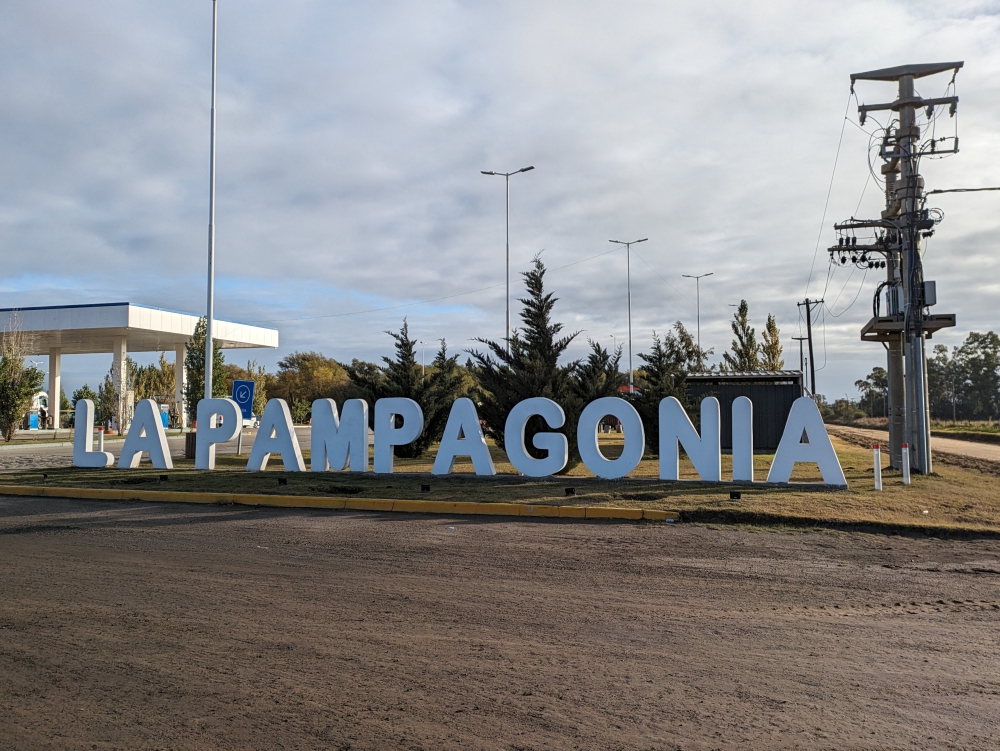
Play on words in the province La Pampa
In grey, rainy, and cold Realico, we found many mosquitoes, a free municipal campground where we spent two nights, and the cheapest gasoline in months. Especially since the exchange rate for the peso had finally gone up. Three weeks out from temporarily leaving our life on the road behind, we started to plan meals around getting rid of all our food – dry and fresh.

Free Municipal Campground in Realico
Junin
As I mentioned before, Mark and I never know what to expect when we pick a potential campsite in our iOverlander app. We usually have a back-up in mind, when things don’t turn out upon arrival. Well, after another boring drive east, Laguna de Gomez in Junin offered extensive areas of green grass, level spots, and a peaceful atmosphere. We loved it from the moment we arrived, took Maya for a walk, and settled in for a few days.
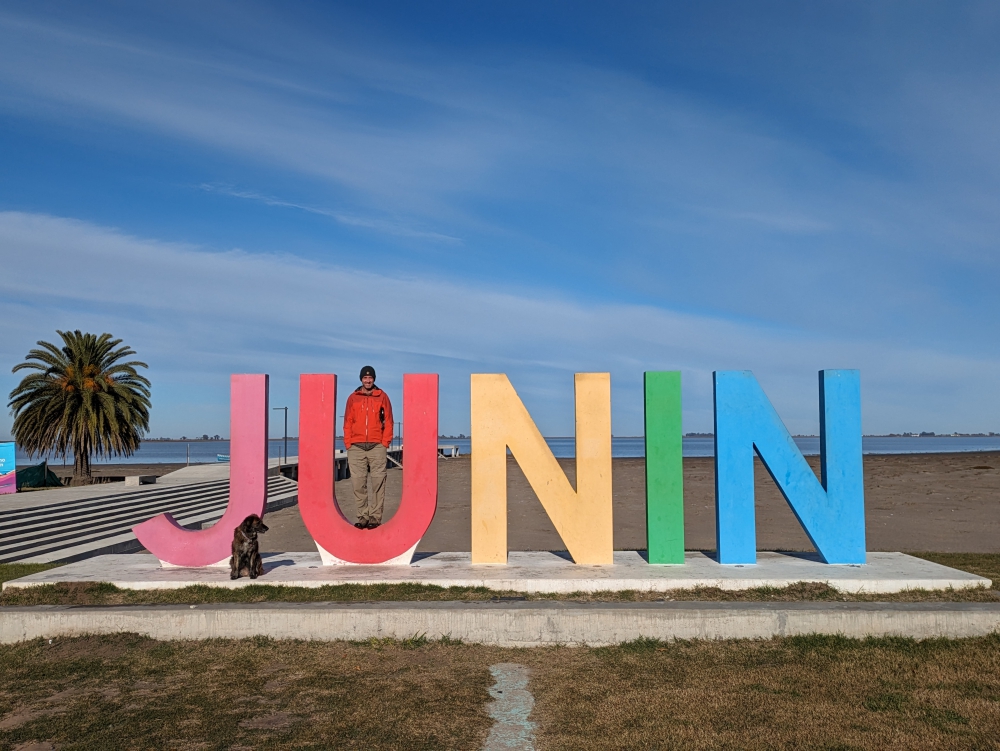
Colorful town sign of Junin
Except, this was the night I described in my expense report of May 2024; when the temperature dropped well below freezing, the butane in our propane tank failed to produce gas, and we couldn’t cook or heat our camper anymore. Mark poured warmish water over the tank after heating that up on the struggling pilot-size flame of our stove, which saved us from shivering more. We needed a better solution!
(As always, click on or hover over the photos in galleries to read their captions.)
Our options: top up the now half-empty butane tank with propane, which would make everything function again in cold weather or move to a location where it wouldn’t freeze. Since it was a holiday Saturday, nobody would be able to sell us propane. So, after a nice walk with Maya and the discovery that our electric lock had a problem, we left our wonderful spot by the lagoon.
San Antonio de Areco
After another three hours of driving, we reached San Antonio de Areco, an attractive town not too far from Buenos Aires. Due to a parking ban, there is really only one decent place to wild camp, near the museum on the edge of town. The weather forecast promised above-freezing temperatures here and we would top up our propane tank first thing on Monday. Due to all the cold weather, condensation had become a problem and mold was growing in the seams of Bella’s walls. We attacked it with a bleach-water mixture and lifted the mattress with a fan blowing underneath.
The center of town was relatively attractive as far as Argentina goes (but still nowhere near as cute as its Colombians counterparts) and within walking distance of our camper. The nearby park was great for dog walks as well. A restaurant in the neighborhood threw awesome Sunday asados (grilled meat fests). While appealing, we passed due to the frigid weather. We hope to return for this meal in the future.
After spending two weeks in Santiago, the capital of Chile, Mark, Maya, and I headed towards Argentina again.
Since we wanted an early start for the border procedure, we slept our last night at an extremely loud and busy fuel station, still in Chile, forgetting that we could have returned to a better spot in Argentina, before crossing the actual border.
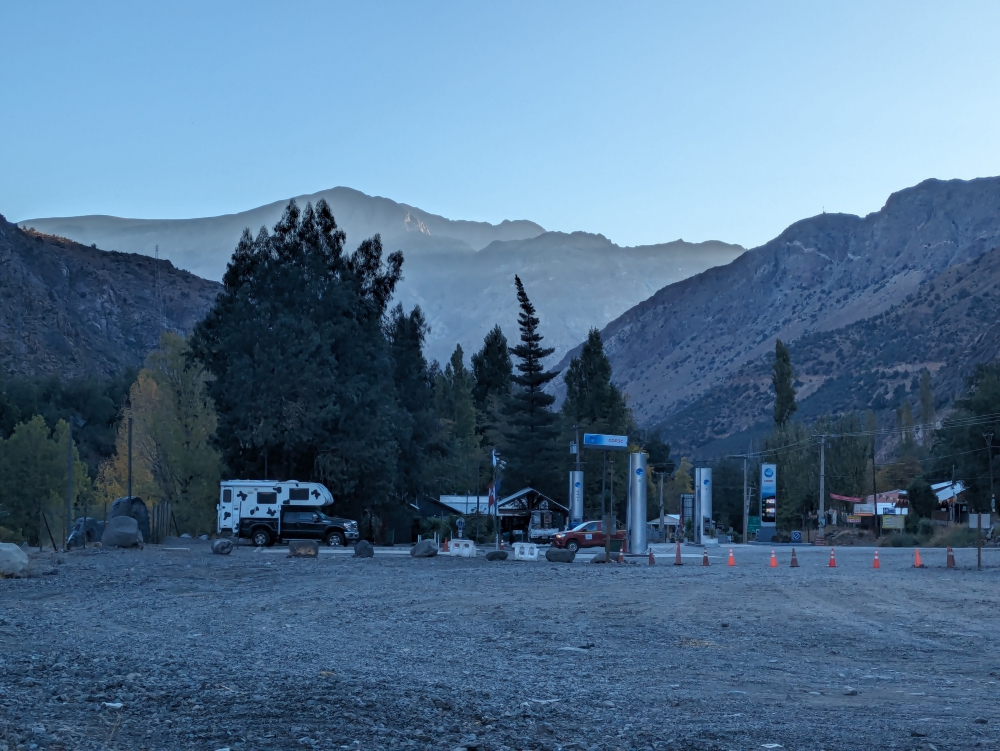
Parked by a loud fuel station
You see, official formalities take place in one building for each country and these buildings are 16 miles (25 km) apart! When you leave Chile, you don’t have to stop at the Chilean border facilities and vice versa. So, you can drive into Argentina and camp, before checking into the country. As a matter of fact, the actual border is located in the Christ The Redeemer Tunnel, which cuts through the Andes.
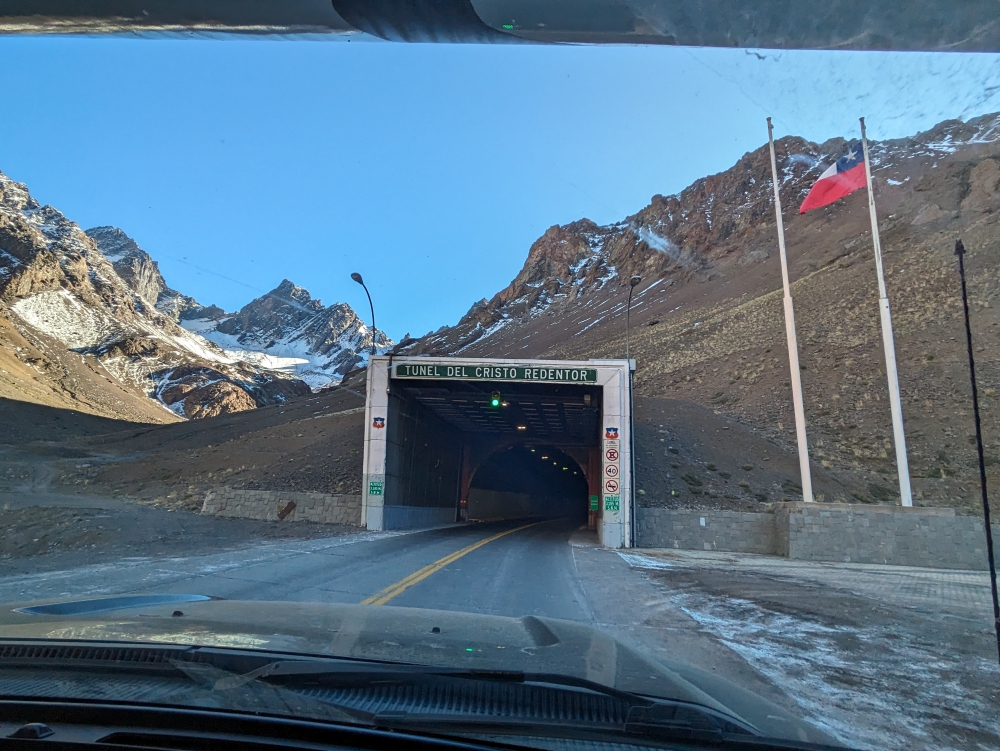
The actual border between Chile and Argentina is in this tunnel
And, a provincial park that contains the tallest mountain in the Western and Southern Hemisphere, Aconcagua, is also located in Argentina before crossing the border. Confusing?
Aconcagua Provincial Park
Our “early start” actually didn’t help, because we still needed to drive an hour to the border, navigating the tight and plentiful switchbacks called Los Caracoles to reach the Los Libertadores pass.
(As always, click on or hover over photos in galleries to read their captions.)
This area, including the border, frequently closes in the winter months due to heavy snowfall and rock slides. As the busiest and most popular commercial border crossing between Chile and Argentina, you can imagine the delays this might cause. Luckily, all was fine when we passed through in late April, but a week later, the pass closed for the first time this winter season.
On our drive, we also realized Aconcagua had to be seen and stopped at before the border formalities. I had hoped to do a hike here, but dogs weren’t allowed, you had to book ahead of time, it was freezing and super windy outside, and we had no idea how long the crossing would take. So, we briefly stopped for a free viewpoint and overlook of this majestic mountain.
Los Libertadores crossing into Argentina
Continue reading(It might be easier to read the table when turning your device in the horizontal position.)
Find all our expense reports here. To learn what other full-time nomads spend each month, check out the blogs of our vanlife friends Duwan and Greg at Make Like An Ape Man.
Next up: A colorful day trip from Santiago to Valparaiso, Chile.
If you are enjoying these posts, please consider donating to Roaming About in support of our website and our lifestyle. A big thank you to all our readers who have helped out in the past!
As overlanders, Mark and I are not city people. Being camped in nature without any human presence or noises is our happy place. Yet, the three of us spent a full two weeks in Santiago de Chile, a capital city of 7 million! This was our all-time “stationary” boondocking record after a year and a half in South America. Jardin, Colombia, is now the runner-up at nine nights. What happened?
Well, this lifestyle is full of surprises. Bad ones and good ones. It had been a while since fate smiled down upon us, but Santiago – which is expensive and not even an interesting tourist destination – ticked some of our required boxes. With ease. We were quite happy there. Read on to learn why…
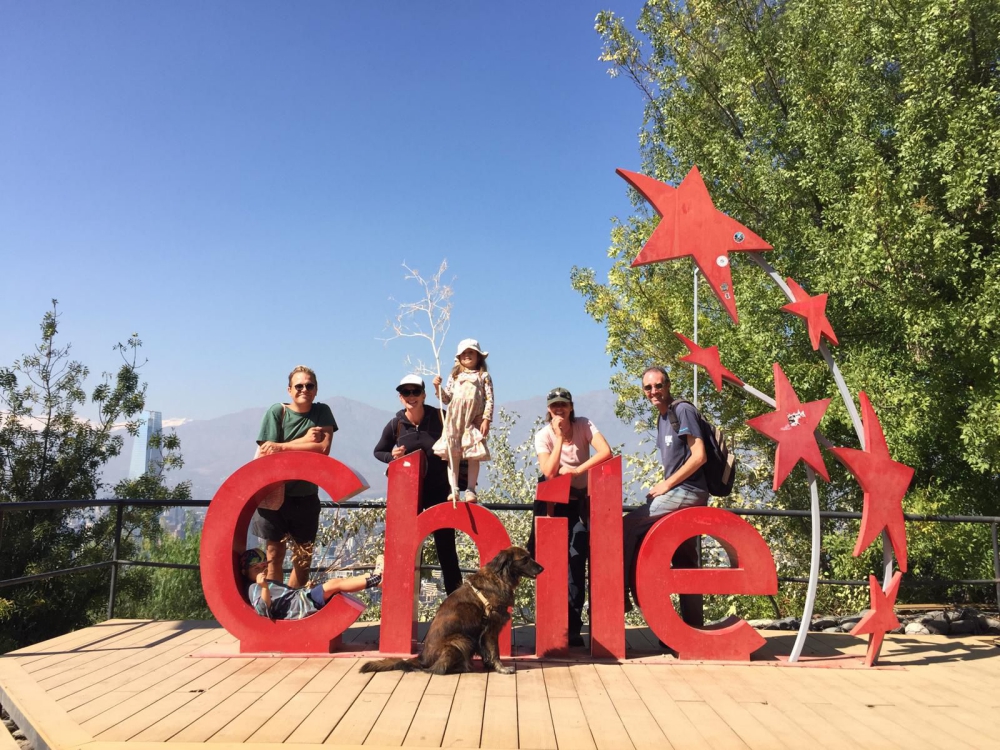
Group shot in the park
(Photo courtesy of Richie Gubler)
Why back to Chile?
If you’ve been following our blog, you might have noticed that some hardships were encountered in Northern Argentina. Nothing disastrous, really, but after getting tired of similar issues in Peru and Bolivia, mostly regarding loose, aggressive dogs, dusty and dirty surroundings, and third-world living conditions, we had hoped for a reprieve of those in Argentina, especially after finding cleanliness and modernity in Northern Chile. When not finding that quite yet, we opted to return to Chile for a bit.
Another consideration was Maya’s international health certificate we obtained in Chile, the end of February. It was valid for sixty days, allowing free entries and exits for our dog between Argentina and Chile until the end of April. We figured we’d take advantage of that permit again, three weeks before it expired.
But the most important reason for our little sojourn back into Chile was truck maintenance. Imported parts are much cheaper there than in Argentina, as we realized when buying our first set of two new tires in Iquique a couple of months ago. Unfortunately, we didn’t purchase four at the time.
That being said, we chose Santiago to replace the other two tires, install a new battery, and do another oil change. Yeah, our expense report for April won’t be pretty again…

Our Providencia neighborhood in Santiago by night
(Photo courtesy of Richie Gubler)
Our fantastic camping spot
The biggest surprise that greeted us in Santiago was the place we opted to wild camp at, based on reviews in iOverlander. It was easy to see why every overlander seemed to flock here!
(As always, hover over or click on photos in galleries to read their captions.)
Continue reading“The scenery is amazing!” “The people are so friendly here!” “Everything just works!” “Argentina is dirt cheap!” – These were the sentiments shared by fellow overlanding friends when they arrived in Argentina, many months before we did. People loved the change of scenery, culture, attitude, and quality of life, once they crossed that “last” border.
Mark and I couldn’t wait to visit. But, sometimes, slow travel bites you in the butt. In March 2024, when the three of us finally arrived in Northern Argentina, prices for everything had doubled, if not tripled or quadrupled, and the excitement of other travelers was lost on us. Because we are on a tight budget? Because we travel with a dog? Because we came from “westernized” Chile with immaculate paved roads, leashed dogs, friendly drivers, clean cities, and modern feel?
In a nutshell: We had expectations when we crossed the border (and that was our mistake, really; we know better than to have expectations). Yet, what we – initially – found were dusty towns, lots of trash, dangerously grooved roads, ear-piercingly loud motorcycles, the smell of burnt garbage, and loose dogs. There were also a lot of indigenous people, unlike in Chile. Northern Argentina felt like an extension of Peru and Bolivia, and it was NOT cheap.
Apart from those experiences as vehicle drivers, long-term travelers, and dog owners, of course there was beauty, joy, and excitement to be found as well. Why else would we still be on the road?

Our destinations in Northern Argentina
Susques
After a beautiful drive, a smooth and efficient border crossing in Pasa Jama, and a disappointing money exchange (our crisp U$100 bills weren’t as crisp as we thought, and the blue dollar “tourist” rate had dropped a lot), we spent our first night near the town of Susques, which has a cute adobe church.
Here, we had to choose between the famously pretty but bumpy Ruta 40 South or the paved comfort of Ruta 68. We picked the easy solution and are happy we did as it delivered beauty in the form of scenery and new friends.
Salinas Grandes
Before reaching our first real tourist town, we stopped at the salt flats of Salinas Grandes. We’d hoped to visit the Ojos, clear pools in the middle of the Salar, on a short van tour, but because of recent rains, this part was too wet to drive on. So, the three of us just walked around the salty terrain with its clear-blue canals – and Maya was a mess!
Purmamarca
In Purmamarca, we only anticipated a hike among the colored mountains. It was a hot afternoon, but the fee for the trail was low and the surroundings bright and attractive. When returning via the center of town, we liked it so much that we decided to spend the night on the sloped parking lot we had pulled into earlier. The pleasant atmosphere of downtown – and the prospect of dinner at a pizza restaurant that didn’t open until 8 pm – had us change plans.
© 2025 Roaming About
Theme by Anders Noren — Up ↑















